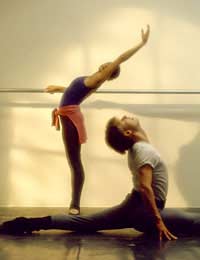The History of Ballet

The origins of ballet can be traced all the way back to the Renaissance courts of Italy. Though a far cry from today’s definition of ballet, the music and dancing enjoyed by the Italian monarchy and aristocracy in the late 1500s gave way to an art form which spread first to France, then throughout Europe, and eventually worldwide. Long before the days of Pointe shoes and tutus, early ballet dancers adapted steps from the traditional courtly dances and wore the everyday fashions of the period. In fact, during this time, participants in the ballet were the wealthy and the royal, rather than professional dancers. In 1581, the earliest noted ballet performance, Ballet Comique de la Reine, was staged by Balthazar de Beaujoyeux and performed in the court of Catherine de Medici.
France and Louis XIV
Court ballets also became popular in France. The early French ballets emphasised grand costumes, scenery, and elaborate staging. However, during the reign of Louis XIV (1643-1715), ballet dancing began to develop more rapidly and gain artistic status. Truly passionate about dance, Louis XIV gained his title, the Sun King, from a role he danced in Jean-Baptiste Lully’s ballet, Ballet de la Nuit. Lully, a composer, was respected by the King and his intrinsic understanding of movement meant that the phrasing of his compositions catered specifically to dance. Lully went on to collaborate with the playwright Molière to create the comédie-ballet. The dancer and choreographer Pierre Beauchamp was another strong influence on ballet in France, establishing the five core ballet positions.In 1661, Louis XIV set up the Académie Royale de la Dance, which exists today in the form of the Paris Opera Ballet. It was also during this time that the first ballet schools were opened and universal ballet terminologies were established using the French language. In 1670, Louis XIV and his courtiers stopped participating in the dances and in turn, gave way to professional dancers. At first, all roles were danced by men, but by 1681, the first female dancers began to participate in professional productions.
The 18th and 19th Centuries
The eighteenth century saw the climb of technical standards in ballet and as a result, it was soon as well-respected an art as opera. However, the popular costumes, masks, and wigs of the time made it difficult for female dancers, in particular, to increase their level of skill and performance. Slowly though, dancers like Marie Camargo and Marie Sall began to break with these traditions, choosing softer shoes and eliminating the corset, in order to jump, turn, and leap with greater ease and fluidity.In the nineteenth century, romantic ballets gained popularity and indicated a move away from the aristocratic origins of the dance. There was a new emphasis upon airiness and aesthetic beauty. The figure of the ballerina became idolised, as Pointe work came into use and the techniques for teaching ballet became more codified. Tutus revealing the lower leg and floral costumes came into fashion, while the ballet slipper was perfected in order to support dance on Pointe. Near the end of the 1800s, countries like Denmark and Russia became the creative hub for ballet, as its popularity in France waned. Artists like Marius Petipa, choreographer of the Imperial Russian Ballet, and the composer Peter Tchaikovsky created works which are still considered part of the classical ballet canon, such as Sleeping Beauty, The Nutcracker Suite and Swan Lake.
International Growth
As ballet entered the twentieth century, Russia remained influential by way of Sergei Diaghilev’s new company, the Ballet Russes, which premiered in Paris in 1909. Diaghilev worked with composer Igor Stravinsky to create controversial and innovative narratives, while his international pool of choreographers experimented with new kinds of movements. The Ballet Russes and its offshoots revitalised ballet on an international scale. Many of the company’s dancers went on to form their own influential companies. These included Anna Pavlova, the famous dancer and choreographer, Marie Rambert and Nanette de Valois, who went on to become the founders of British ballet, and George Balanchine, who brought his choreography back to America.As modern dance came into existence in the 1920s and 30s, ballet, too, saw many breaks with tradition. Choreographers explored political themes and non-traditional movement vocabularies. Beginning in New York with American Ballet Theatre and the New York City Ballet, cities throughout America and Canada saw the creation of a local company. In the 1960s, dance in general had a surge in popularity and its audiences and influences became younger and more rooted in pop-culture. Today, companies all over the world celebrate ballet’s traditions, while continuing to push its limits and enter into new territory. International schools and touring companies allow innovation to spread worldwide and the classics to be maintained.
Business Energy With a Difference
If you are looking for business energy or need advanced solutions like remote energy monitoring, new supplies, downgrading or upgrading capacity, have a no obligation chat with Purely Energy.
To find our more get in touch here. or call 0161 521 3400.





